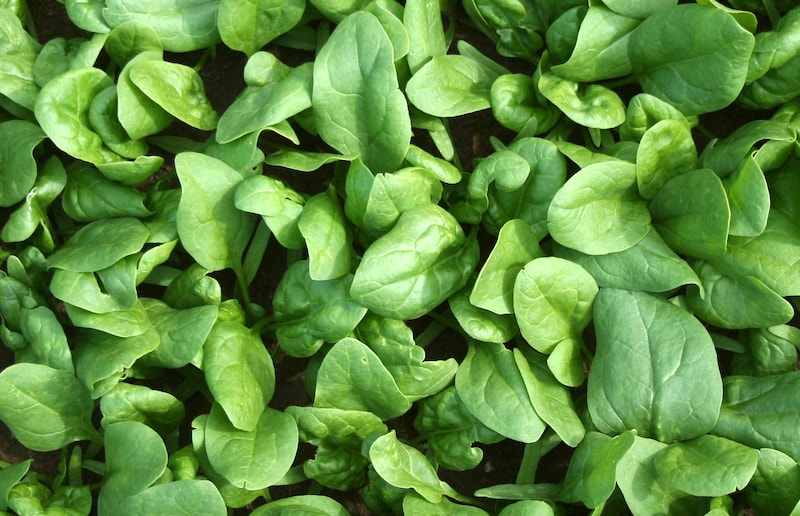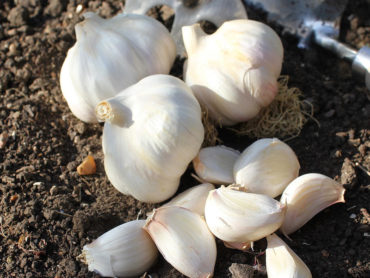Spinach is easy to grow when you know how. We’ve gathered expert advice from our favourite bloggers, YouTubers and Instagrammers to show you how to get the best from this leafy green.
Tolerant of cooler temperatures and shady spots, spinach seeds can be sown in containers or directly into the ground. Quickly producing nutritious leaves, it’s especially well suited to successional sowing for extended periods of harvest.
Contents:
- Best advice on sowing spinach seeds
- The difference between spinach and perpetual spinach
- Best advice on planting out spinach seedlings
- Best advice on harvesting spinach
- Best advice on how to prevent spinach from ‘bolting’
Best advice on sowing spinach seeds
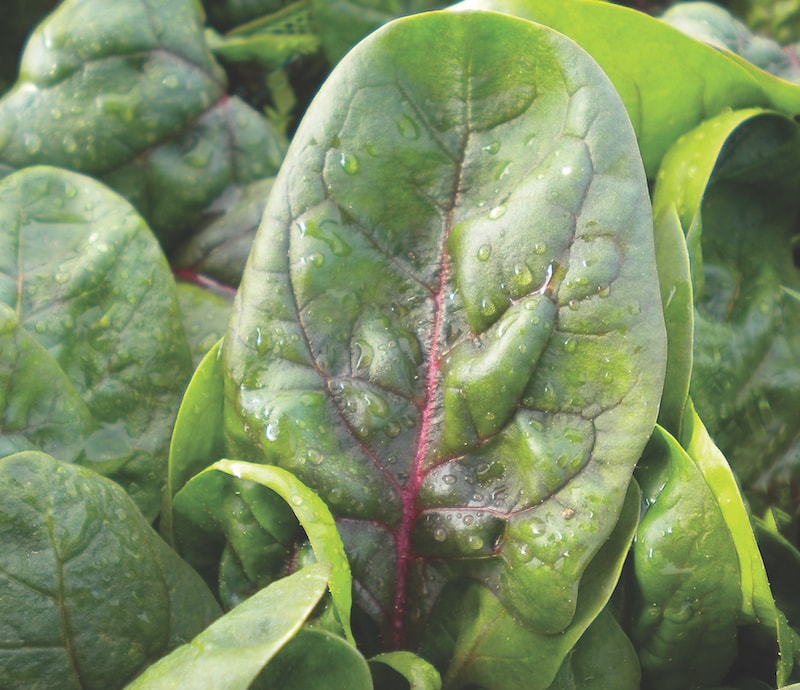
Image: Spinach Seeds ‘F1 Rubino’ from Suttons
True spinach (as opposed to perpetual spinach) prefers a cooler temperature for germination, so spring and autumn are the best times to direct sow seeds outdoors. However, David Marks at Garden Focused recommends starting spinach seeds off indoors to better control the temperature. He says, “spinach seed is more sensitive to ground temperatures compared to many other vegetables.”
Charles Dowding gets his spring spinach started under cover, which he explains beautifully in his video about early and late sowing. Keeping the young seedlings indoors protects them from slugs at a crucial point in their growth. Charles also sows early in spring to increase his harvest: “You get your spinach leaves in decent quantity for quite a long period, say for six weeks off the same plants, before the plant thinks of flowering” in early summer.
Liz Zorab of Byther Farm likes to sow her spinach seeds in August. She grows a mix of produce in the same plot, cleverly maximising space by planting crops with different maturing speeds. Watch her video to see how she broad-sows winter spinach amongst her strawberry plants, scattering the seeds across a shallow trench of about six inches’ width before lightly working them into the soil.
In his comprehensive spinach growing guide, David Marks of Garden Focused explains that though spinach being easy to grow, “many gardeners have problems with seed germination.” If this applies to you, David recommends pre-germinating. Simply soak the seeds in water for a day and then keep them between layers of damp kitchen paper for a couple of days until they sprout.
Another solution to “sporadic germination” is offered by Huw Richards in his video on how to get great results from direct sowing. Poor germination is often caused by the ground drying out while your seeds are trying to germinate. Huw recommends fellow YouTube gardener James Prigioni’s method of covering the freshly sown seeds with planks of wood to prevent evaporation. Simply check under the planks every few days and remove them “as soon as you see the first sign of green shoots”. Huw says that the planks are also a clever way to trap slugs, allowing you to remove them before your seedlings appear.
The difference between spinach and perpetual spinach
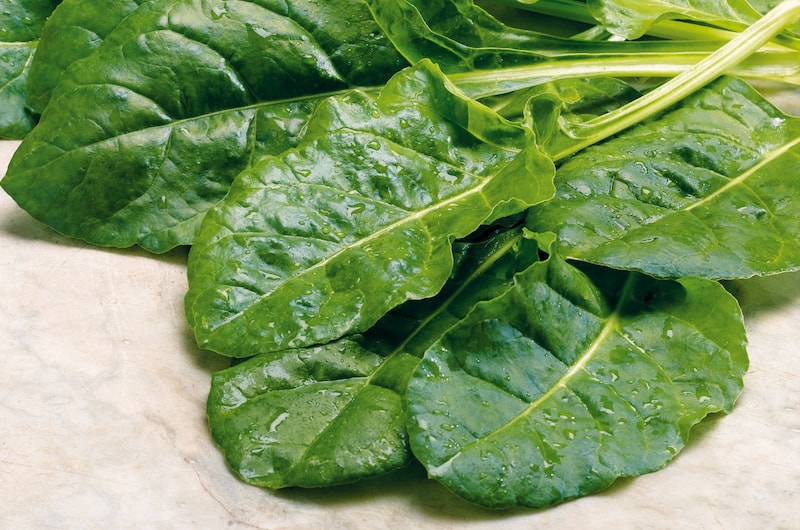
Image: Spinach Seeds ‘Perpetual Spinach’ from Suttons
Pete at Real Men Sow is a big fan of perpetual spinach which, despite its name, is actually a type of chard. It has a similar flavour to true spinach and he personally finds it easier to grow. In his guide to growing perpetual spinach, he highlights the importance of keeping the plants well watered to encourage rapid leaf growth. According to Pete, these plants “don’t like acid soil, so make sure to check what kind of soil you have before growing them”.
Fabrice of the Myatt’s Fields Park team also finds perpetual spinach “extremely easy to grow”, even in shallow containers. In his video about chard and perpetual spinach seedlings he explains that the plants can reach a foot in height, so need plenty of space to fully mature. Fabrice’s secret to thinning his crop? Use a knife to “take out all but the strongest seedlings” at soil level. He says that this is better than pulling them out as perpetual spinach doesn’t like root disturbance.
Paul of Richard and Paul recommends successional sowing in order to get several harvests and avoid “a glut of perpetual spinach… which we might not be able to use”. His easy-to-follow Grow Along video shows you how to sow perpetual spinach in modules.
Best advice on planting out spinach seedlings
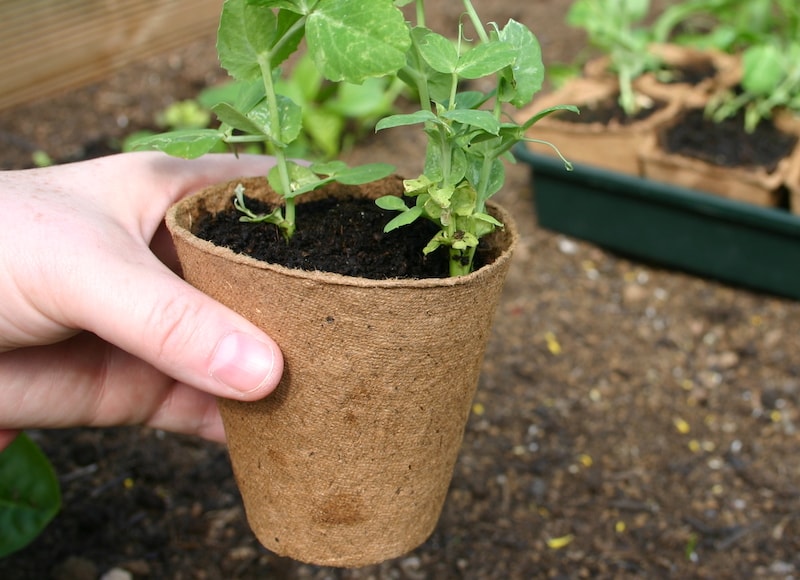
Image: Round fibre pots from Suttons (shown with pea seedlings)
Over at the West London Gardener, Zena’s short video demonstrates how to plant spinach seedlings into a container. Her top tip for improving drainage is to mix some sand into the compost. As her seedlings are a bit spindly, she wisely plants them quite deeply to ensure the stems have good support and anchorage.
Ann Marie Hendry, aka @that.vegetablist, makes clever use of space by planting spinach seedlings between her potatoes after the first crop of spuds is lifted. She picks “the spinach as baby leaves until they either get too big or the potatoes threaten to shade them out,” then harvests and freezes the remainder, giving the bed over to the potatoes again.
Planting your spinach amongst other crops (also called ‘interplanting’) is one of several simple but effective strategies that Ben Vanheems of Grow Veg recommends for keeping pests off plants. Interplanting “confuses passing pests because they will find it harder to home in on their preferred crop”.
Spinach seedlings can be planted outside as soon as they’ve produced a couple of true leaves, as Huw Richards explains in his no-nonsense video guide to transplanting seedlings. However, he prefers to delay transplanting until his plants are a bit bigger and have stronger roots. This also helps him to spot and prevent slug attacks which can potentially destroy an entire crop of smaller seedlings.
If you’re not sure about the best place to plant out your seedlings, Mark of Vertical Veg says that spinach does just fine with only 3-4 hours of direct sunlight. This is particularly useful information for urban gardeners, as there’s no need to worry if “surrounding buildings, walls, pylons and trees… cast shade on your growing space”, says Mark. Read his full article on plants that grow well in shady spaces for more tips.
Best advice on harvesting spinach
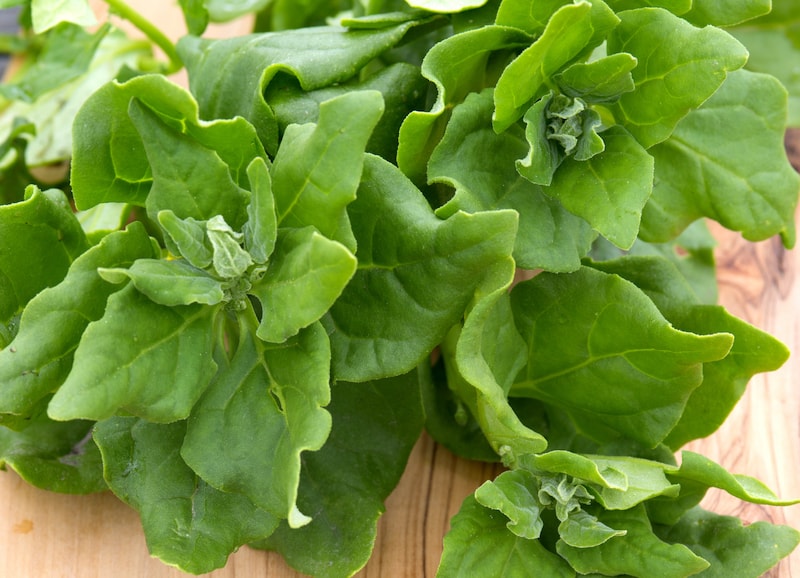
Image: Spinach ‘New Zealand’ from Suttons
John Harrison from Allotment & Gardens explains how to extend your harvest by picking young leaves from the outside of your plants. His top tip? “With summer spinach you can take as much as half the leaves in one go, but winter spinach is slower to grow so take only a few leaves from each plant…” He also recommends using spinach leaves as soon as they’ve been picked, as they don’t store well.
Over at @theorganicgreenhouse, Kerry finds it “so rewarding” to be able to harvest fresh spinach leaves from her greenhouse several times a week. Worried about the process that shop-bought spinach might have undergone “to keep it fresh in a bag for so long,” she’s also mindful of the nutrients that are lost while it’s sitting on a shelf. Follow her organic journey on Instagram.
This Vertical Veg article about the nutritional benefits of homegrown produce also highlights the fact that spinach loses its nutrients quickly after picking, with one study finding that “spinach lost nearly half (47%) of its vitamin content in just six days.” The author, Mark, is an enthusiastic advocate of growing more food in cities, which enables people to access good quality produce, eat more healthily and “also connect and engage more deeply with our food again”.
Kev Lane, aka @englishmanofthesoil, harvested three buckets of spinach leaves from his allotment as the plants had begun to flower (also known as ‘bolting’). To preserve them, he quickly blanches the leaves and has a great method for freezing: “just ball them, freeze in muffin tins, then when frozen, take out of the tins and pop into a zip lock bag. Then you can just grab one or two balls as needed.”
Best advice on how to prevent spinach from ‘bolting’
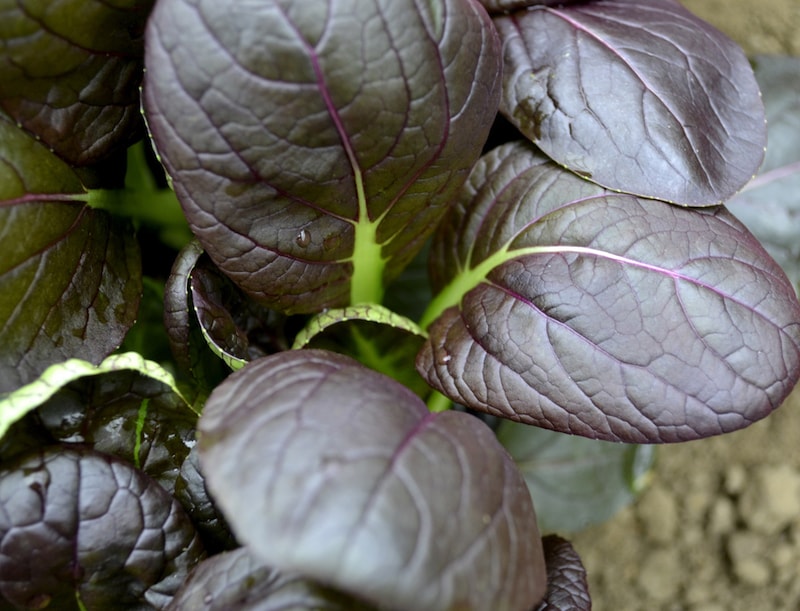
Image: Spinach Seeds ‘F1 Comred’ from Suttons
When a plant sends up a solid stem and starts producing flowers or seed pods, this is known as ‘bolting’. Certain conditions can cause your spinach or other crops to bolt. As explained by the Suttons gardening team in this article on how to stop onions from bolting, a plant will set seed earlier if it feels stressed, for example due to extremes of temperature or a lack of water. Bolting can be delayed by keeping plants well watered and choosing a part-shaded spot for summer growing. The first signs are easy to recognise, giving you a chance to quickly harvest your remaining crop.
Sami Beltran of @growingfoodforbeginners gives a helpful comparison of spinach leaves, showing the telltale shape change that indicates your plant is getting ready to bolt. Although some people complain that these smaller, more pointy leaves are bitter, Sami personally doesn’t notice a difference and is happy to enjoy her spinach leaves for as long as her plant produces them.
Eagle-eyed Cat of @cat_london_garden also spotted that her leaves were changing shape at the end of May so quickly harvested her spinach before it bolted. She grows an amazing variety of produce in her small East London garden and plans to sow more spinach for autumn, as it’s a “cool season crop”.
Gardening Wise home gardener Mahwish planted her spinach in April but experienced unusual weather that caused her plants to bolt. However, all was not lost as she patiently harvested the seeds for saving and storing, as demonstrated in her seed-collecting video.
Spinach needs certain conditions to germinate and thrive but, with help from our experienced gardening bloggers, these are easily met. Keep to these simple rules and you’ll be rewarded with nutritious spinach leaves throughout the year.
Lead image: Spinach Seeds ‘F1 Amazon’ from Suttons
Last Updated on December 11, 2024 by Suttons Horticultural Team

